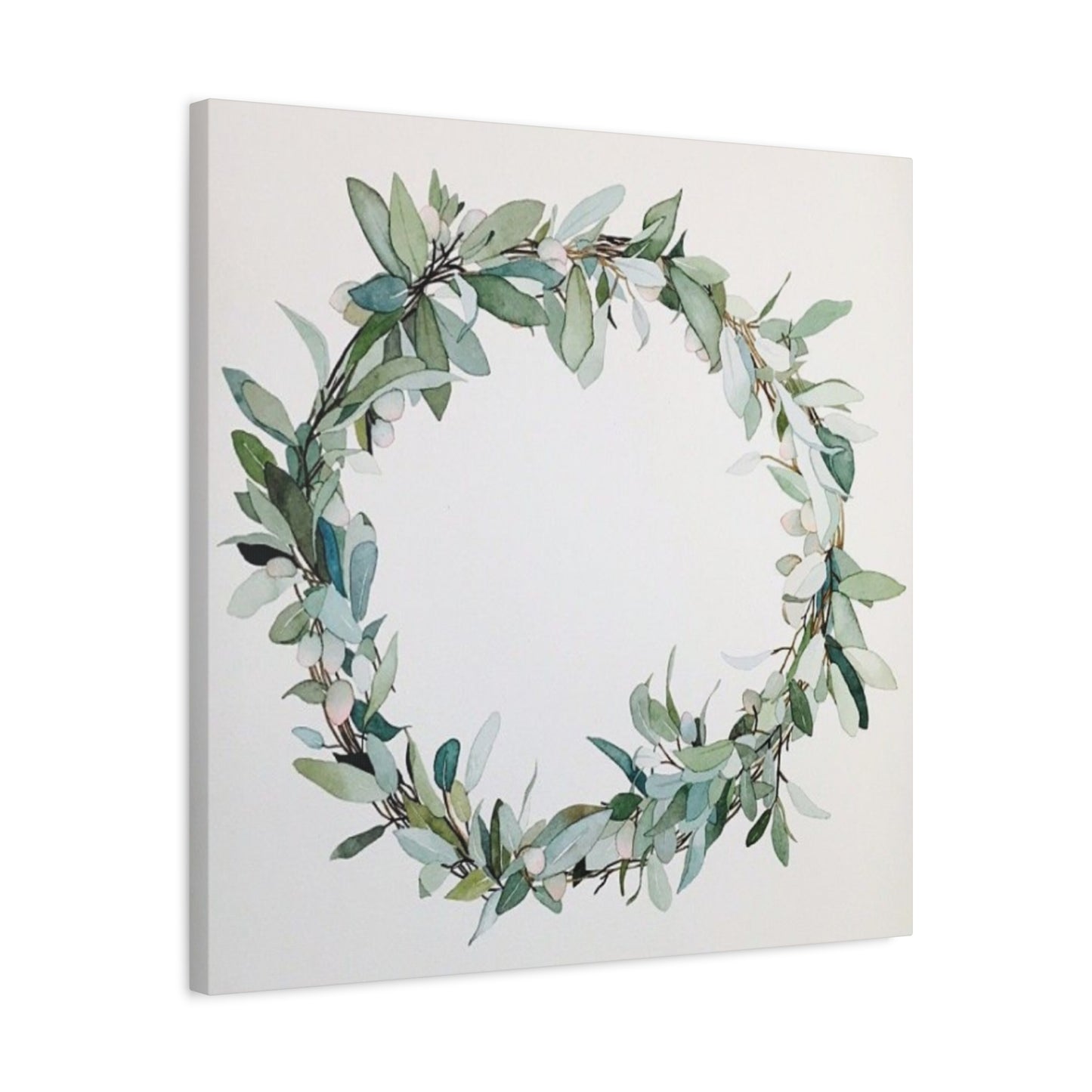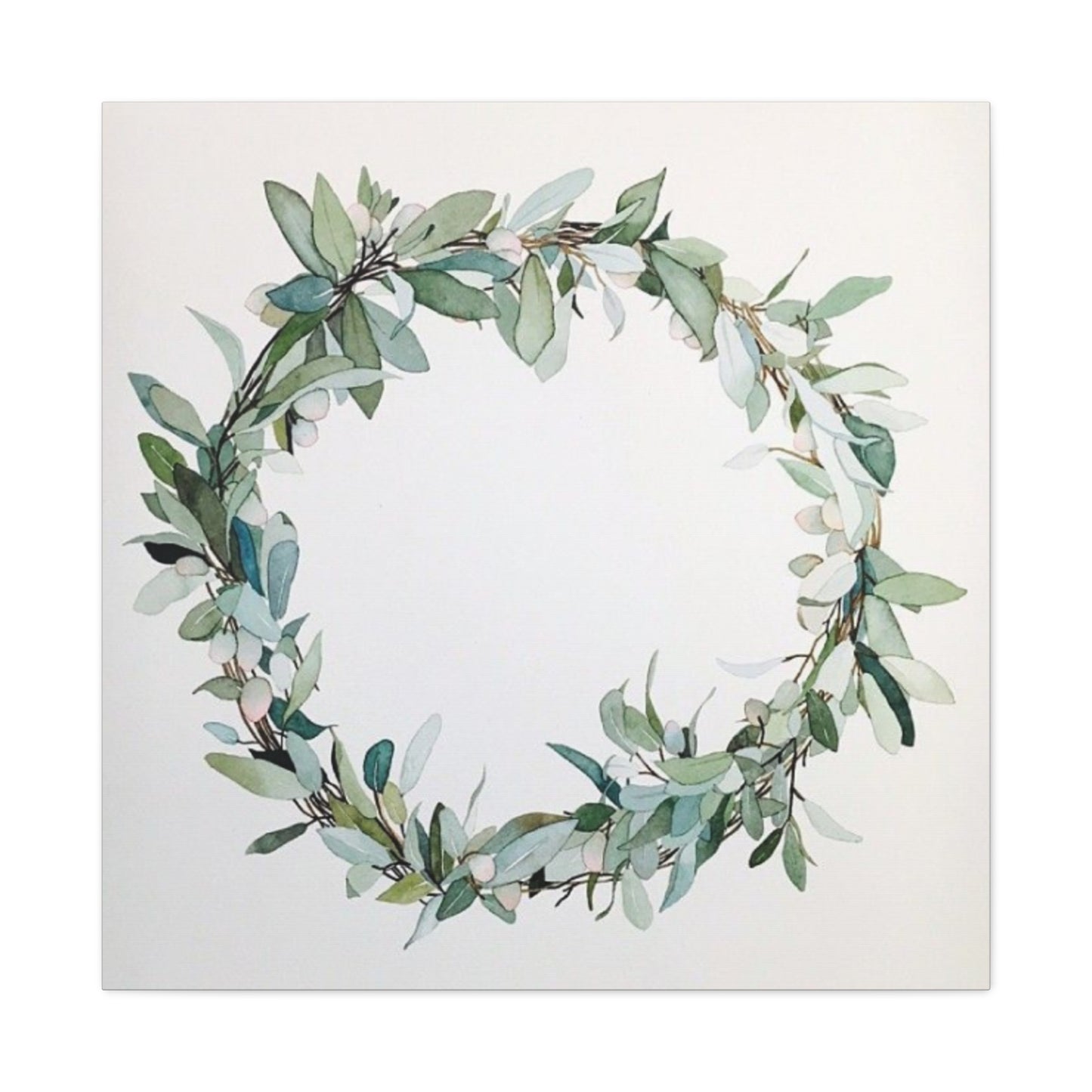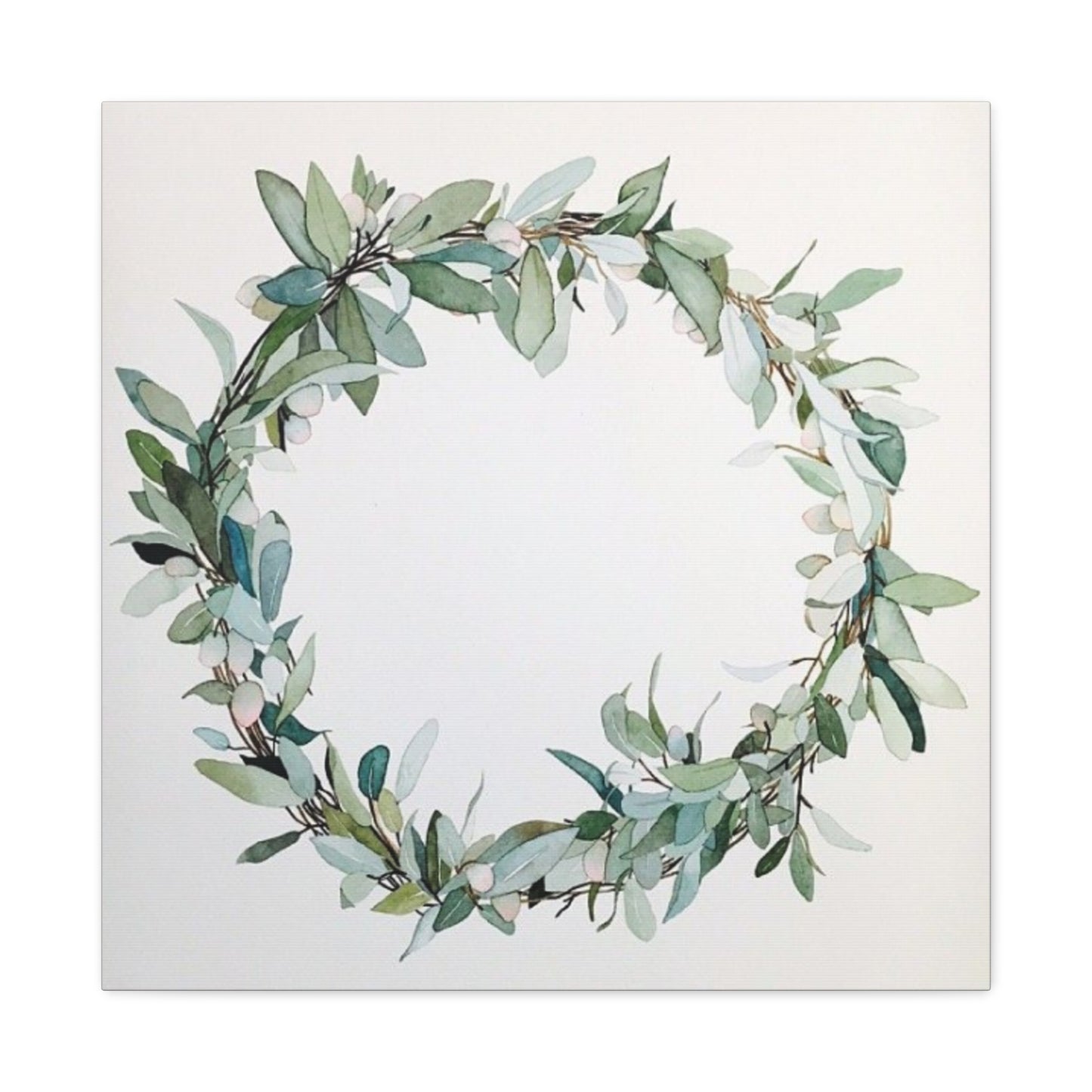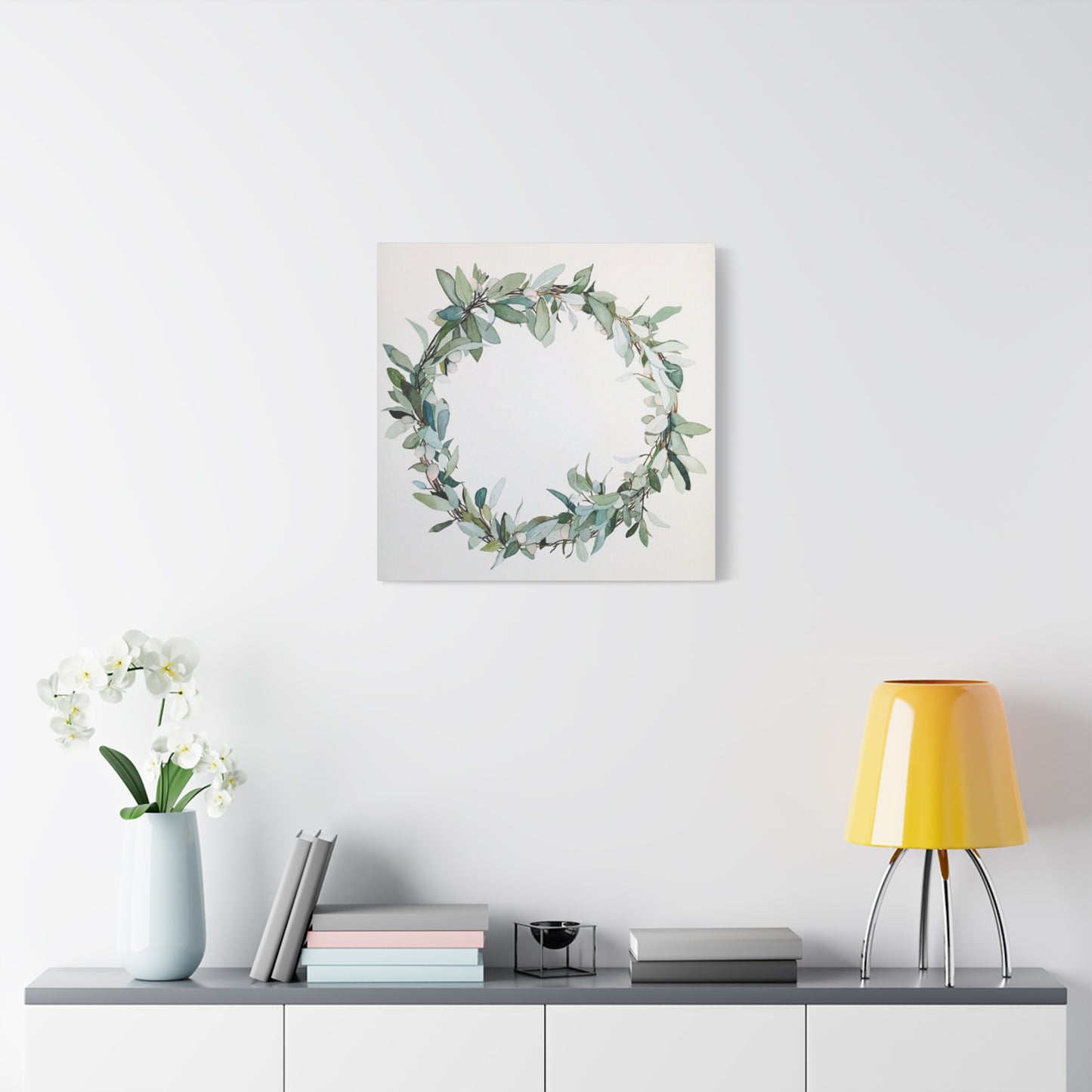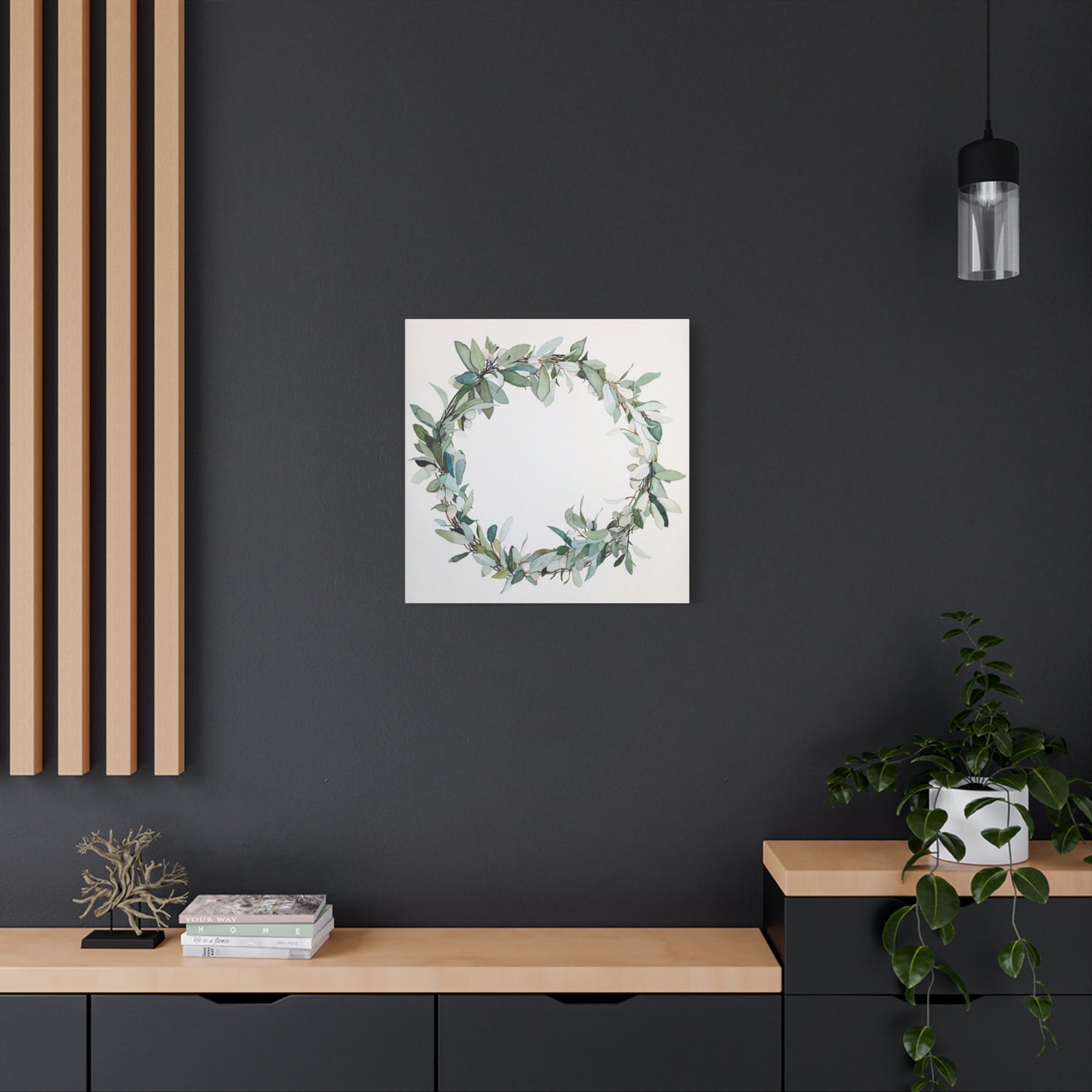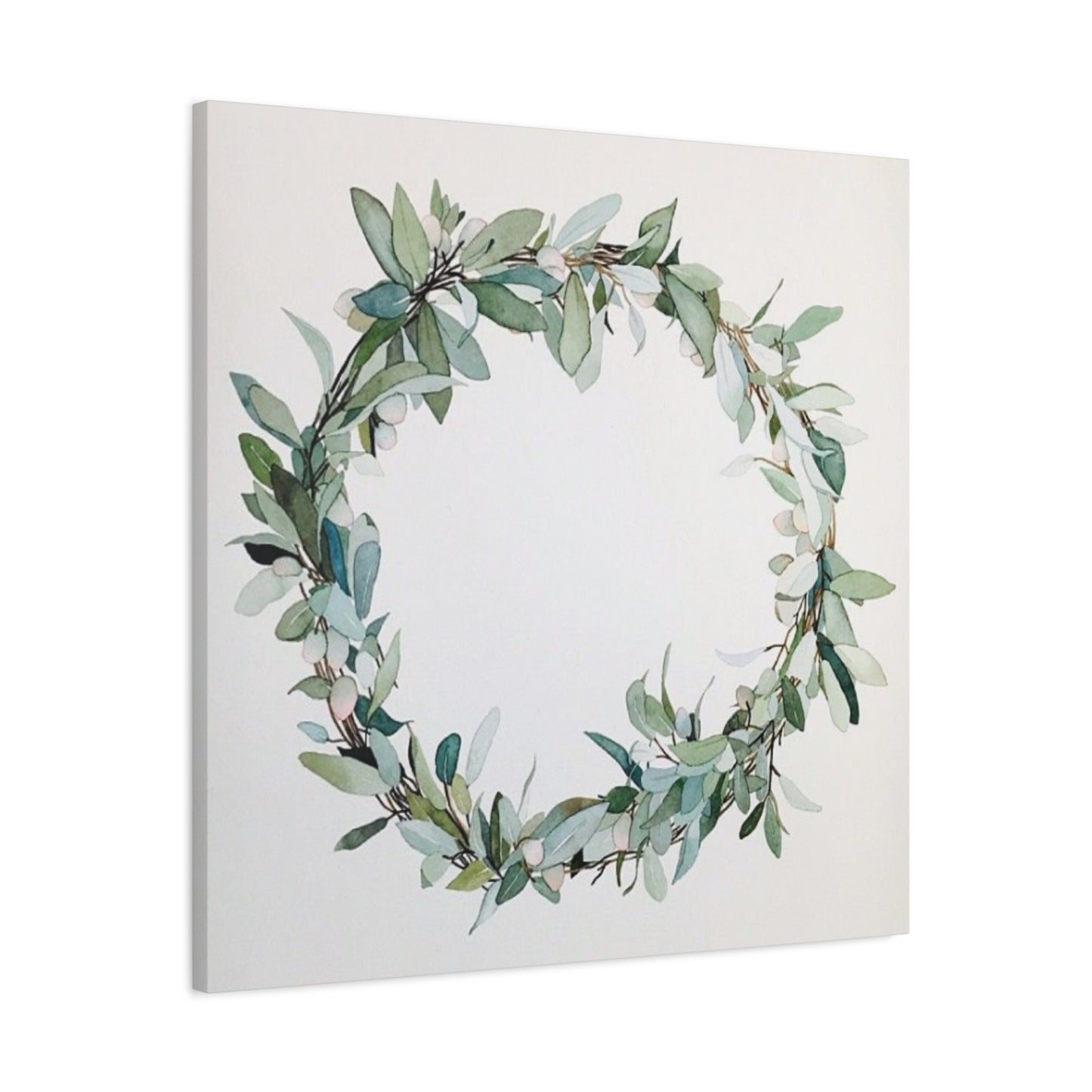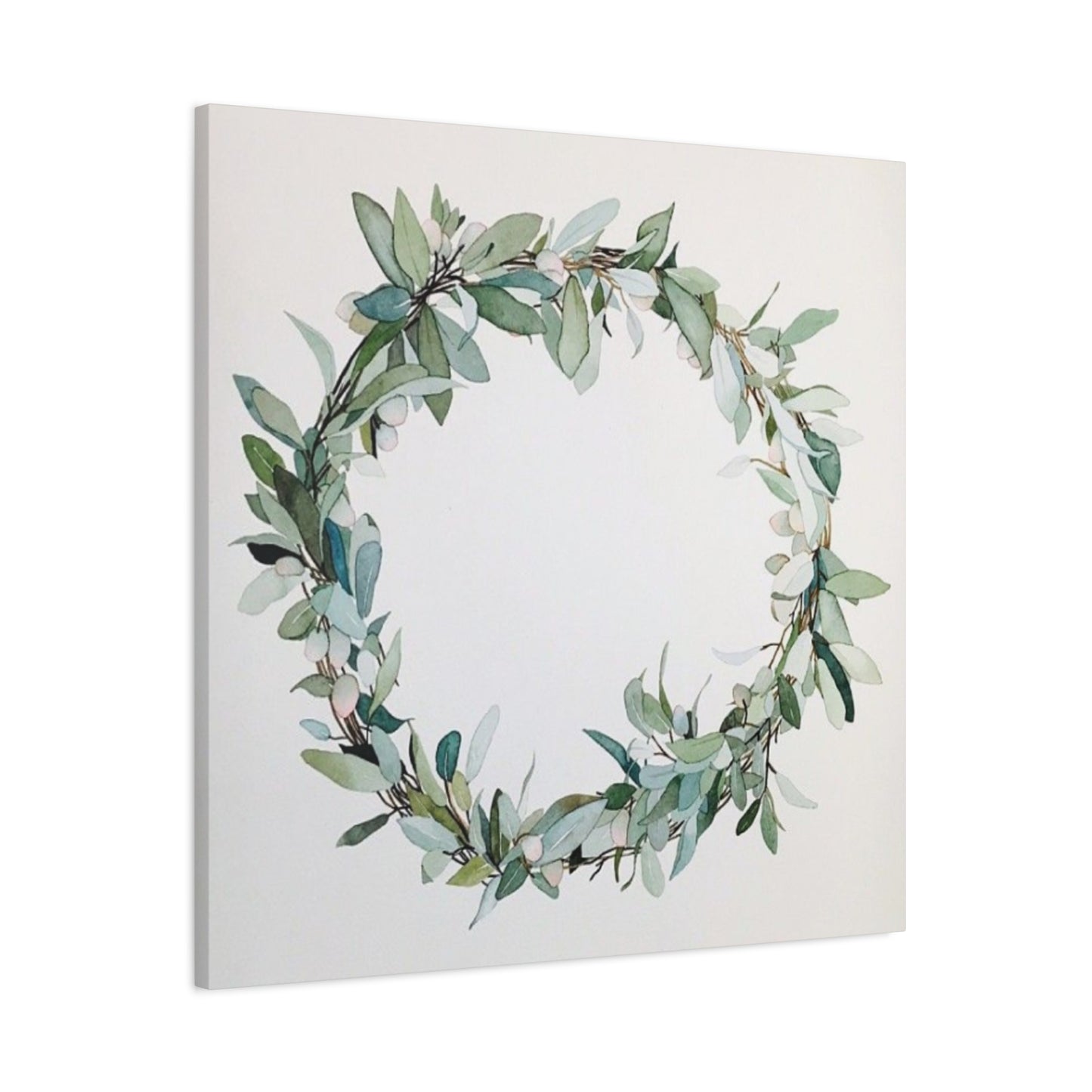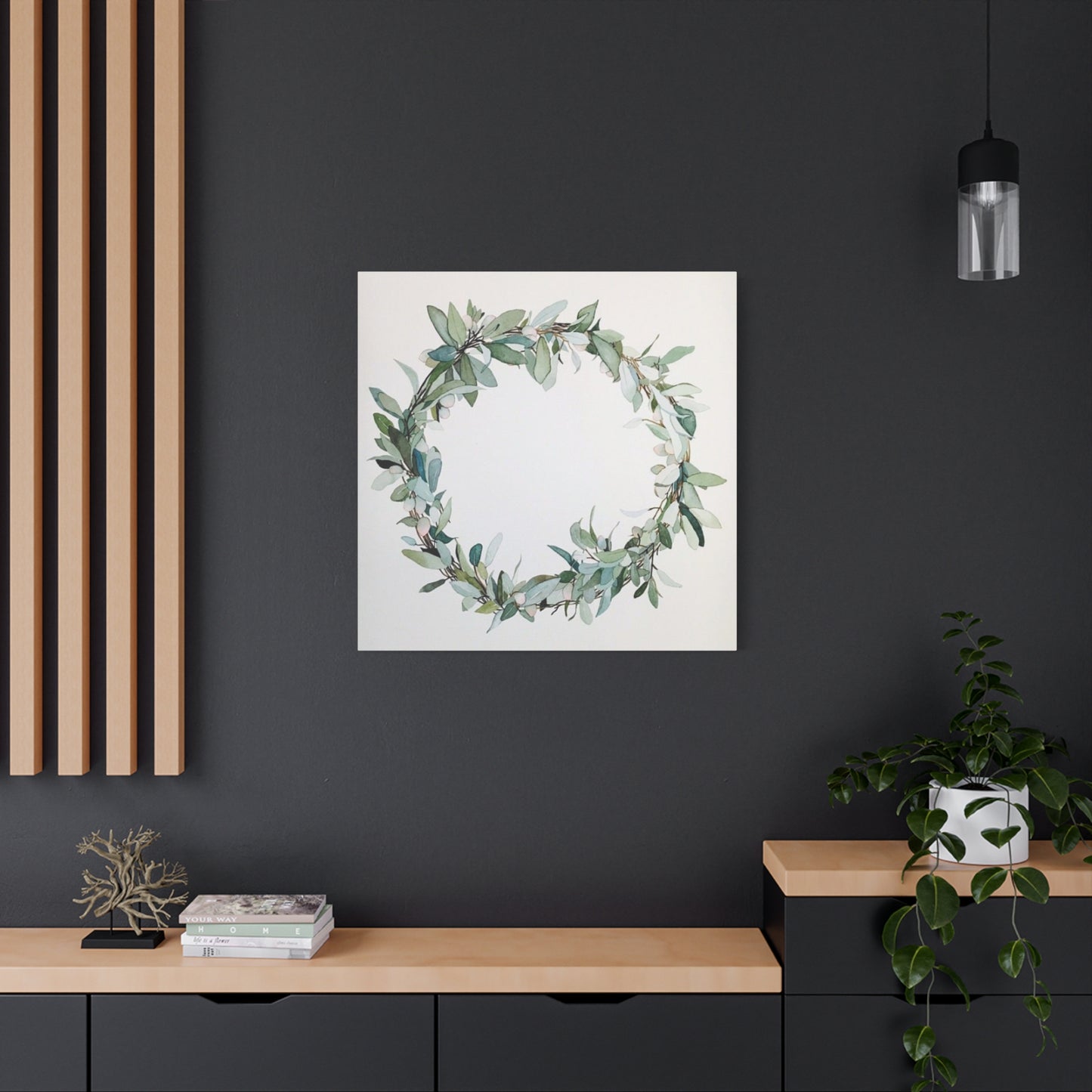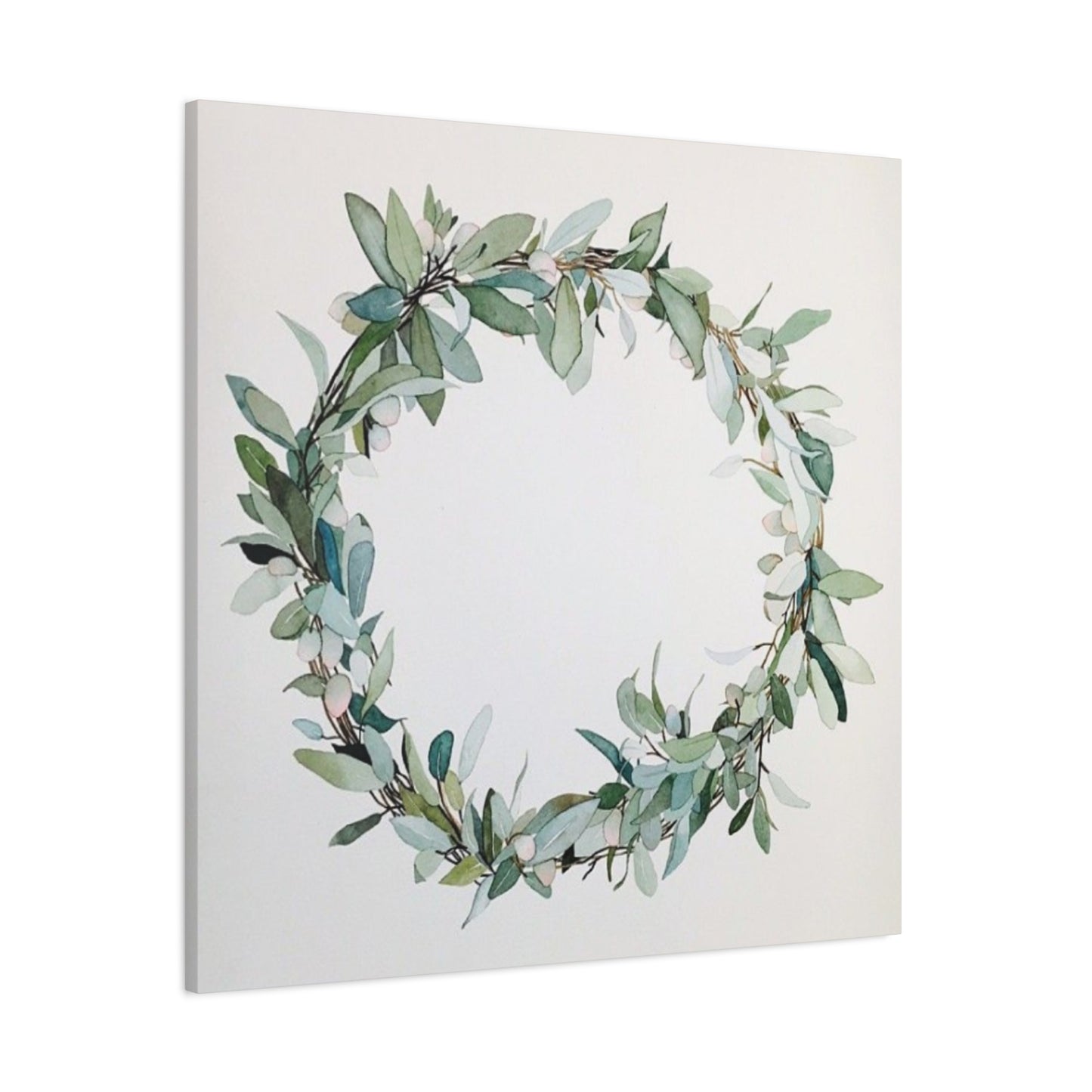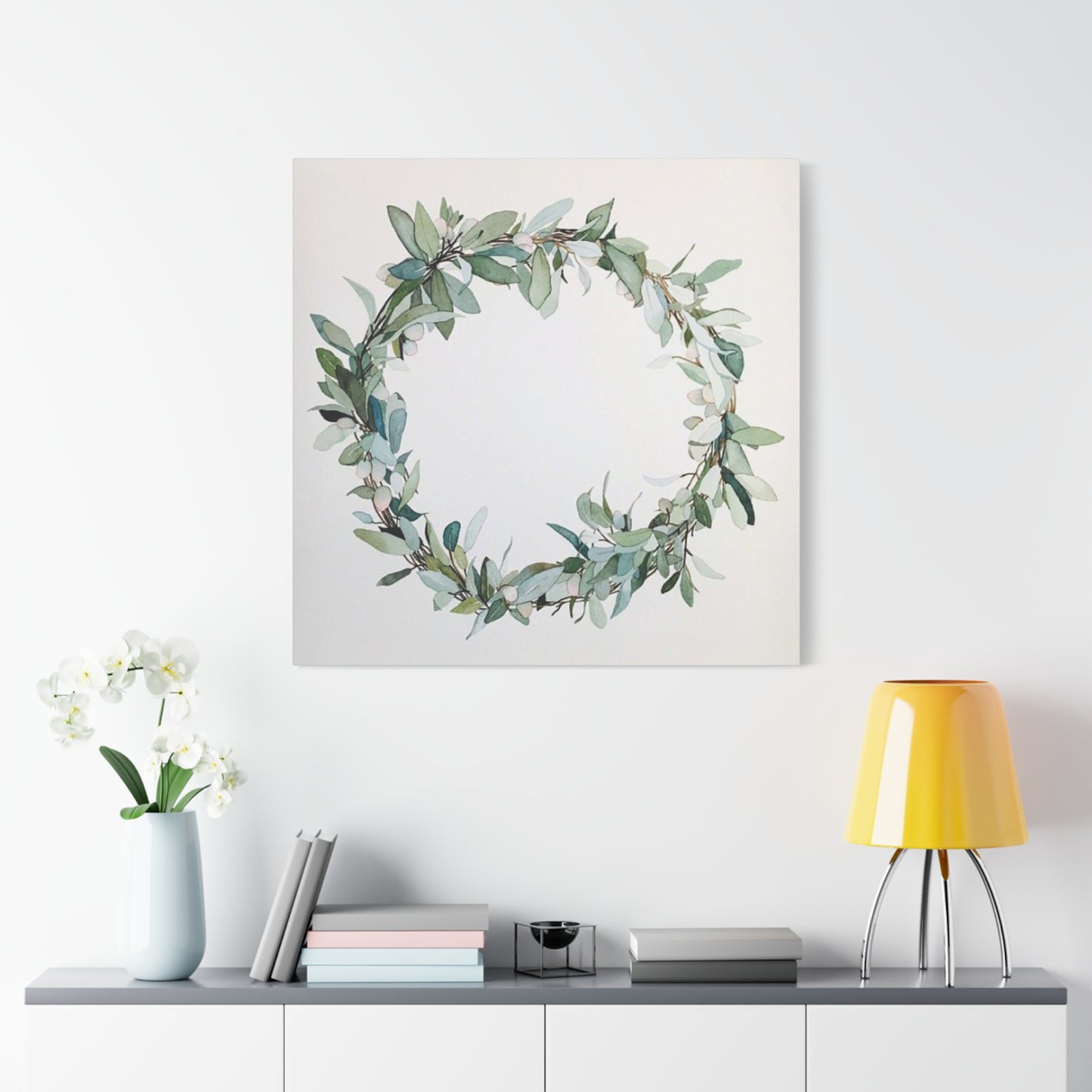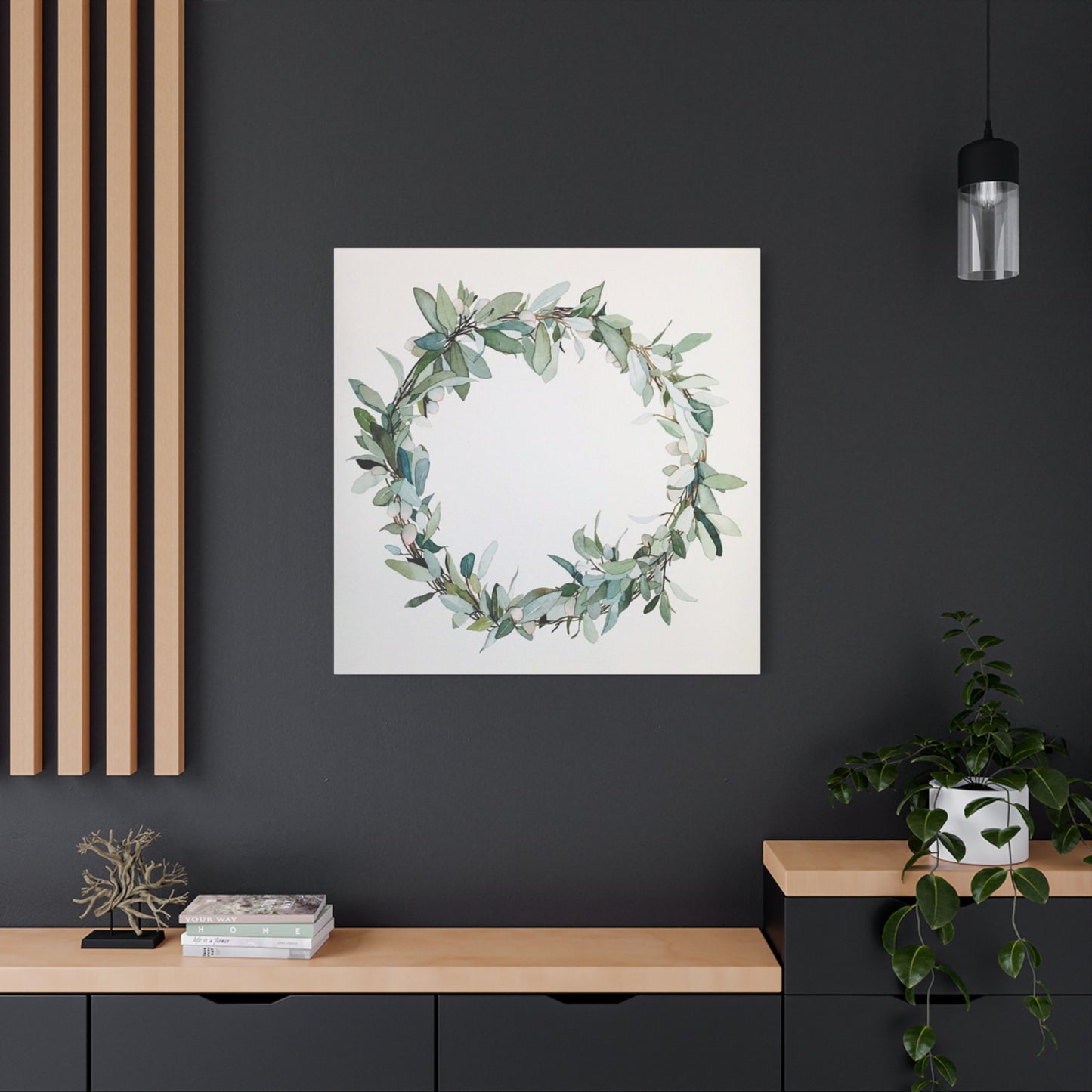Eucalyptus Wall Art: Creating Beautiful Flower Rings for Natural Home Enhancement
Eucalyptus wall art has emerged as one of the most elegant and versatile home decoration trends, offering homeowners an opportunity to bring natural beauty into their living environments through stunning floral arrangements. These botanical masterpieces, particularly eucalyptus flower rings, provide an affordable yet sophisticated way to enhance any room while maintaining a connection to nature. The popularity of eucalyptus wall art stems from its ability to complement various decorative styles, from contemporary minimalism to rustic farmhouse aesthetics.
The versatility of eucalyptus makes it an ideal choice for creating wall art that can adapt to different seasons, occasions, and personal preferences. Whether you prefer the vibrant appearance of fresh eucalyptus or the lasting beauty of dried varieties, these botanical elements can be crafted into stunning rings that serve as focal points in any room. The natural fragrance of eucalyptus also adds an aromatherapeutic element to your home, creating a calming atmosphere that promotes relaxation and well-being.
Creating eucalyptus wall art requires minimal investment while delivering maximum visual impact. The accessibility of eucalyptus, combined with simple crafting techniques, makes this decorative approach suitable for both beginners and experienced DIY enthusiasts. From single statement pieces to elaborate gallery walls featuring multiple rings in varying sizes, eucalyptus wall art offers endless possibilities for personal expression and creative exploration.
Eucalyptus Flower Rings for Walls
Eucalyptus flower rings represent the perfect marriage of natural beauty and artistic design, creating stunning focal points that can transform any wall into a gallery of botanical elegance. These circular arrangements showcase the graceful curves and distinctive foliage of eucalyptus while providing a structured framework that appeals to contemporary aesthetic sensibilities. The ring format allows for creative interpretation, from simple, sparse arrangements that emphasize negative spaces to lush, full circles that create dramatic visual impact.
The construction of eucalyptus flower rings begins with selecting the appropriate base materials, which can range from wire wreath forms to embroidery hoops, depending on the desired final appearance and budget considerations. Wire forms offer flexibility and professional results, allowing crafters to adjust the shape and create perfectly circular arrangements. Embroidery hoops provide a more rustic aesthetic and are particularly suitable for bohemian or farmhouse-inspired decorative schemes.
When creating eucalyptus flower rings, the selection of eucalyptus varieties plays a crucial role in determining the final appearance and longevity of the piece. Silver dollar eucalyptus, with its distinctive round leaves and silvery-green coloration, creates stunning contrast and texture. Baby blue eucalyptus offers delicate, smaller leaves that work well for intricate arrangements, while seeded eucalyptus provides interesting texture variations with its small, bead-like seed pods.
The placement of eucalyptus elements around the ring requires careful consideration of balance, proportion, and visual flow. Creating asymmetrical arrangements often produces more dynamic and visually interesting results than perfectly symmetrical designs. Varying the density of eucalyptus placement can create rhythm and movement within the ring, drawing the eye around the circle and creating a sense of organic naturalness.
Securing eucalyptus to the ring base requires appropriate materials and techniques to ensure longevity and stability. Floral wire works well for most applications, providing strong hold while remaining virtually invisible in the finished piece. Green floral tape can be used to cover wire connections and provide additional security, particularly important when using heavier eucalyptus branches or when planning to display the ring in high-traffic areas.
The finishing touches for eucalyptus flower rings can include additional natural elements such as cotton stems, pampas grass, or seasonal flowers that complement the eucalyptus without overwhelming its natural beauty. Ribbon accents can add color and texture while providing opportunities to coordinate the ring with existing room decorations or seasonal themes.
DIY Eucalyptus Wall Decor
Creating DIY eucalyptus wall decor offers an rewarding opportunity to craft personalized botanical art while developing valuable creative skills and saving significant money compared to purchasing pre-made pieces. The DIY approach allows for complete customization of size, style, and color combinations, ensuring that each piece perfectly complements its intended location and the overall decorative theme of the home.
The essential materials for DIY eucalyptus wall decor include various eucalyptus varieties, which can be sourced from local florists, farmers markets, or even harvested from backyard eucalyptus trees where available. Fresh eucalyptus provides vibrant colors and natural fragrance but requires more frequent replacement, while dried eucalyptus offers longevity and consistent appearance over extended periods.
Basic crafting tools required for eucalyptus wall decor projects include sharp floral scissors or pruning shears for clean cuts that promote better water uptake in fresh arrangements. Wire cutters become necessary when working with floral wire or adjusting wire wreath forms. Hot glue guns provide quick adhesion for lighter elements, though floral wire generally offers more reliable long-term security for heavier eucalyptus branches.
The design process begins with sketching or visualizing the desired arrangement, considering factors such as the wall dimensions, surrounding furniture, and existing decorative elements. Creating templates using paper or cardboard can help determine optimal sizes and proportions before committing to cutting expensive eucalyptus materials.
Preparation techniques for eucalyptus involve conditioning fresh stems by cutting them underwater at an angle, which prevents air bubbles from blocking water uptake. Removing lower leaves from stems that will be submerged in water helps prevent bacterial growth and extends the life of fresh arrangements. For dried eucalyptus projects, ensuring complete dryness prevents mold development and maintains structural integrity.
Assembly techniques vary depending on the chosen design format, but generally involve starting with larger, structural elements before adding smaller, detail pieces. Working from the back of the arrangement forward helps create depth and layering that appears more natural and visually interesting than flat, single-layer designs.
Quality control during the DIY process involves regularly stepping back to assess balance, proportion, and overall visual harmony. Making adjustments during assembly proves much easier than attempting modifications after completion. Photographing the work in progress can help identify areas needing adjustment or improvement.
Finishing techniques for DIY eucalyptus wall decor include trimming excess wire, securing loose elements, and adding protective backing materials when necessary. Applying clear sealant sprays to dried arrangements can help maintain color and prevent leaf drop, though this may alter the natural texture and appearance of the eucalyptus.
Fresh vs Dried Eucalyptus Art
The choice between fresh and dried eucalyptus for wall art projects involves weighing numerous factors including appearance, longevity, maintenance requirements, and cost considerations. Each option offers distinct advantages and challenges that influence the overall success and satisfaction of the finished decorative piece.
Fresh eucalyptus provides vibrant, rich colors that range from deep green to silvery-blue, depending on the variety selected. The natural oils present in fresh eucalyptus create an distinctive aromatherapeutic experience, releasing pleasant scents that can help reduce stress and promote relaxation. The pliability of fresh eucalyptus makes it easier to manipulate into desired shapes and positions, allowing for more intricate and detailed arrangements.
However, fresh eucalyptus requires ongoing maintenance including regular misting to maintain flexibility and prevent premature drying. The limited lifespan of fresh eucalyptus means that arrangements typically need replacement every two to four weeks, depending on environmental conditions and the specific varieties used. Seasonal availability can affect both pricing and selection of fresh eucalyptus varieties.
Dried eucalyptus offers exceptional longevity, often maintaining its appearance for months or even years when properly prepared and displayed in appropriate conditions. The muted, sophisticated colors of dried eucalyptus complement neutral decorative schemes and provide consistency that doesn't change with seasonal variations. Dried eucalyptus requires minimal maintenance beyond occasional dusting and protection from excessive moisture.
The drying process itself can be incorporated into the decorative timeline, allowing crafters to harvest fresh eucalyptus and gradually transition to dried arrangements while enjoying both phases of the material's lifecycle. Air drying eucalyptus involves bundling stems and hanging them in well-ventilated areas away from direct sunlight, typically requiring two to three weeks for complete drying.
Preservation techniques for eucalyptus include glycerin treatments that maintain flexibility while preventing deterioration, though this process requires more time and resources than simple air drying. Silica gel drying produces excellent color retention and faster results but requires investment in desiccant materials and proper storage containers.
Cost considerations between fresh and dried eucalyptus vary significantly based on local availability and seasonal factors. While fresh eucalyptus may appear more expensive due to replacement needs, the ability to dry fresh eucalyptus for future use can provide economic advantages for long-term decorative planning.
Storage requirements differ substantially between fresh and dried eucalyptus, with fresh varieties requiring immediate use or refrigerated storage, while dried eucalyptus can be stored in boxes or containers for extended periods without deterioration.
The environmental impact considerations include the carbon footprint of frequently replacing fresh arrangements versus the one-time resource use of dried eucalyptus that provides extended service life.
Styling with Eucalyptus Rings
Styling eucalyptus rings effectively requires understanding how these natural elements interact with various decorative themes, color palettes, and architectural features to create cohesive and visually appealing room designs. The versatility of eucalyptus rings allows them to serve as subtle accents or bold statement pieces, depending on their size, placement, and accompanying decorative elements.
The scale and proportion of eucalyptus rings must be carefully considered in relation to the wall dimensions and surrounding furniture pieces. Large rings work well as focal points above sofas, beds, or dining tables, while smaller rings can be grouped together to create gallery walls or used as accent pieces in smaller areas such as hallways or powder rooms.
Color coordination between eucalyptus rings and existing room elements involves understanding the natural color variations in eucalyptus and how they complement different paint colors, fabrics, and decorative accessories. The silvery-green tones of eucalyptus work particularly well with neutral palettes, while the natural variations can bridge warm and cool color schemes effectively.
Placement strategies for eucalyptus rings include considering sight lines, lighting conditions, and traffic patterns within the room. Positioning rings at eye level creates optimal visual impact, while slightly higher placement can make ceilings appear taller and rooms feel more spacious. Avoiding placement directly above heat sources helps maintain the integrity of both fresh and dried eucalyptus materials.
Layering eucalyptus rings with other wall art requires careful attention to visual balance and thematic consistency. Combining rings with framed artwork, mirrors, or other decorative elements can create sophisticated gallery walls that showcase personal style while maintaining visual harmony.
Lighting considerations play a crucial role in how eucalyptus rings appear throughout different times of day. Natural lighting enhances the organic beauty of eucalyptus, while artificial lighting can be positioned to create dramatic shadows and highlight textural elements. Avoiding direct sunlight helps prevent fading and deterioration of both fresh and dried materials.
Seasonal styling adaptations allow eucalyptus rings to evolve with changing decorative themes throughout the year. Adding ribbon accents, small ornaments, or complementary natural elements can transform basic eucalyptus rings to reflect holiday themes or seasonal color preferences without requiring complete replacement of the base arrangement.
The integration of eucalyptus rings with different furniture styles requires understanding how natural elements complement various aesthetic approaches. Modern furniture benefits from the organic contrast provided by eucalyptus rings, while traditional furnishings are enhanced by the classic appeal of natural botanical elements.
Eucalyptus Rings for Minimalist Homes
Eucalyptus rings align perfectly with minimalist design principles, offering the natural beauty and organic texture that minimalist environments often lack while maintaining the clean, uncluttered aesthetic that defines this decorative approach. The simple, circular form of eucalyptus rings provides visual interest without overwhelming minimalist rooms with excessive ornamentation or complex patterns.
The selection of eucalyptus varieties for minimalist applications typically favors varieties with clean lines and consistent coloring, such as silver dollar eucalyptus or baby blue eucalyptus. These varieties provide the necessary visual impact while maintaining the sophisticated simplicity that minimalist design demands. Avoiding overly complex or heavily textured eucalyptus varieties helps maintain the serene, uncluttered feeling essential to minimalist environments.
Ring construction for minimalist applications often emphasizes negative space as much as the eucalyptus elements themselves, creating arrangements that feel intentional and purposeful rather than randomly assembled. Sparse arrangements that allow the wall color to show through the ring can create more impact than dense, full circles that might feel overwhelming in minimalist settings.
Color considerations for minimalist eucalyptus rings typically favor muted, natural tones that complement neutral color palettes common in minimalist homes. The subtle color variations in eucalyptus provide enough visual interest to prevent monotony while maintaining the calm, peaceful atmosphere that minimalist design seeks to achieve.
Placement strategies in minimalist homes often involve using eucalyptus rings as focal points in otherwise sparse wall compositions, allowing the natural beauty of the eucalyptus to command attention without competing with other decorative elements. Single, well-proportioned rings often work better than multiple smaller rings in minimalist settings.
The maintenance requirements of eucalyptus rings align well with minimalist lifestyle preferences, requiring minimal ongoing attention while providing maximum visual impact. Dried eucalyptus particularly suits minimalist homes due to its low maintenance requirements and consistent appearance over time.
Integration with minimalist furniture involves considering how the organic curves of eucalyptus rings complement the clean lines and geometric forms common in minimalist furniture design. The contrast between natural and manufactured elements can create visual tension that adds interest to minimalist rooms without compromising their essential simplicity.
Seasonal considerations for minimalist eucalyptus rings typically involve subtle modifications rather than dramatic changes, maintaining consistency with the minimalist preference for timeless, rather than trendy, decorative elements. Simple ribbon additions or slight arrangement modifications can acknowledge seasonal changes without overwhelming the basic minimalist aesthetic.
How to Preserve Eucalyptus Flowers
Preserving eucalyptus flowers and foliage ensures long-lasting beauty for wall art projects while maintaining the natural characteristics that make these botanical elements so appealing. Various preservation methods offer different advantages depending on the intended use, desired appearance, and available time and resources for the preservation process.
Air drying represents the most accessible and commonly used preservation method, requiring minimal equipment while producing reliable results. The air drying process begins with harvesting eucalyptus at the optimal time, typically in the morning after dew has evaporated but before the heat of the day causes moisture stress. Selecting stems with healthy foliage and no signs of disease or insect damage ensures better preservation results.
The preparation phase for air drying involves removing excess foliage from the lower portions of stems and creating small bundles secured with rubber bands or string. Rubber bands accommodate the shrinkage that occurs during drying, maintaining secure bundles throughout the process. Bundle sizes should remain small enough to allow adequate air circulation around all stems, typically limiting bundles to five to seven stems depending on their thickness.
Drying location selection significantly impacts the quality and speed of the preservation process. Ideal locations provide good air circulation, low humidity, and protection from direct sunlight, which can cause fading and brittle textures. Attics, basements, closets, or dedicated drying rooms can all serve as appropriate drying locations, provided they meet these environmental requirements.
The drying timeline varies based on environmental conditions, eucalyptus variety, and stem thickness, typically requiring two to four weeks for complete moisture removal. Properly dried eucalyptus should feel papery and brittle to the touch while retaining good color and structural integrity. Underdried eucalyptus may develop mold or continue shrinking after arrangement, while over-dried eucalyptus becomes excessively fragile and prone to breakage.
Glycerin preservation offers an alternative method that maintains more flexibility in dried eucalyptus while producing slightly different color results. The glycerin process involves creating a solution of glycerin and water that stems absorb, replacing natural moisture with the preservative solution. This method requires more time and resources but produces eucalyptus that remains pliable and less likely to shatter or break during handling.
Silica gel drying provides rapid results with excellent color retention but requires investment in desiccant materials and proper storage containers. This method works particularly well for eucalyptus flowers and delicate foliage that might be damaged by air drying methods. The silica gel process typically completes within several days rather than weeks required for air drying.
Press drying using flower presses or heavy books creates flat eucalyptus specimens suitable for framed artwork or incorporated into other flat decorative applications. This method sacrifices three-dimensional form but preserves color and detail exceptionally well, making it ideal for specific artistic applications.
Storage techniques for preserved eucalyptus involve protecting dried materials from moisture, insects, and mechanical damage while maintaining accessibility for craft projects. Cardboard boxes with adequate ventilation work well for bulk storage, while plastic containers should be avoided due to potential moisture accumulation that can lead to mold development.
Eucalyptus Flower Rings in Boho Decor
Eucalyptus flower rings complement bohemian decorative themes perfectly, offering the natural, eclectic elements that define boho style while providing opportunities to incorporate additional textures, colors, and materials that enhance the free-spirited aesthetic. The organic nature of eucalyptus aligns with the boho emphasis on natural materials and handcrafted elements.
The construction of boho-style eucalyptus rings often involves layering different eucalyptus varieties to create rich textural combinations that reflect the maximalist tendencies within bohemian design. Combining silver dollar eucalyptus with seeded varieties and willow eucalyptus creates visual depth and complexity that suits the eclectic boho approach to decoration.
Additional materials commonly incorporated into boho eucalyptus rings include macrame elements, feathers, ribbons in earth tones, dried flowers such as pampas grass or cotton stems, and small decorative beads or charms that reflect personal interests or cultural influences. These additions should complement rather than overwhelm the natural beauty of the eucalyptus.
Color palettes for boho eucalyptus rings typically embrace earth tones, muted jewel colors, and natural variations that reflect the bohemian connection to nature and global influences. Rust, terracotta, deep purples, and golden yellows work particularly well with the natural green and silver tones of eucalyptus while maintaining the warm, inviting feeling essential to boho environments.
The placement of eucalyptus rings in boho-decorated rooms often involves creating gallery walls that combine rings with other bohemian art forms such as woven wall hangings, vintage mirrors, or ethnically-inspired artwork. The layered, collected-over-time appearance common in boho decor accommodates multiple eucalyptus rings in various sizes and styles.
Seasonal adaptations for boho eucalyptus rings can include incorporating elements that reflect different cultural celebrations or personal milestones, maintaining the bohemian emphasis on personal expression and global awareness. Adding elements such as small crystals, meaningful charms, or seasonal flowers allows the rings to evolve while maintaining their core eucalyptus foundation.
The maintenance of boho eucalyptus rings aligns with the bohemian lifestyle's emphasis on natural aging and patina development. Allowing eucalyptus to naturally fade and change over time contributes to the authentic, lived-in feeling that bohemian decorating celebrates rather than fights against.
Integration with other boho decorative elements involves considering how eucalyptus rings interact with textiles, lighting, and furniture commonly found in bohemian homes. The rings can echo colors found in Persian rugs, complement the warm lighting from lanterns and string lights, and provide natural balance to the rich textures common in boho environments.
Natural Wall Art Ideas
Natural wall art encompasses a broad range of creative possibilities that utilize organic materials to bring the beauty of the outdoors into home environments, with eucalyptus serving as just one element in a comprehensive approach to nature-inspired decoration. Understanding various natural materials and their applications helps create cohesive decorative schemes that celebrate the diversity and beauty of the natural world.
Branch and twig arrangements offer sculptural elements that complement eucalyptus rings while providing different textural and visual qualities. Birch branches, with their distinctive white bark and delicate forms, create elegant contrast when combined with eucalyptus elements. Curved branches can be arranged to echo the circular forms of eucalyptus rings or provide linear elements that balance rounded compositions.
Pressed flower and leaf collections create flat art pieces that work well in groupings with dimensional eucalyptus arrangements. The pressing process preserves delicate flowers and leaves while creating artwork suitable for framing or mounting directly on walls. Combining pressed eucalyptus leaves with other pressed botanical specimens creates diverse collections that showcase seasonal changes and natural variety.
Driftwood and natural wood elements provide rustic foundations for eucalyptus arrangements or serve as standalone sculptural pieces that complement botanical wall art. The weathered textures and organic forms of driftwood create interesting contrast with the refined appearance of carefully arranged eucalyptus rings.
Stone and mineral displays can anchor natural wall art compositions while providing weight and stability that balances lighter botanical elements. Mounted stone specimens, geode slices, or mineral collections create focal points that work well with eucalyptus arrangements in earth-toned or neutral decorative schemes.
Fiber and textile elements derived from natural sources, such as jute, sisal, or cotton, can be incorporated into wall art compositions through macrame, weaving, or simple hanging installations that complement eucalyptus rings. These elements add textural variety while maintaining the natural theme.
Seasonal natural materials allow wall art compositions to evolve throughout the year, incorporating elements such as pine cones and evergreen branches in winter, fresh flowers and new growth in spring, dried grasses and seed heads in fall. Eucalyptus provides consistency throughout seasonal changes while other elements reflect natural cycles.
The arrangement and composition of mixed natural wall art requires attention to scale, proportion, and visual balance similar to any gallery wall installation. Grouping elements by size, color, or texture creates rhythm and coherence, while strategic placement of contrasting elements provides visual interest and prevents monotony.
Using Eucalyptus in Entryways
Entryways present unique opportunities for eucalyptus wall art installations, serving as transition zones between outdoor and interior environments where natural elements feel particularly appropriate and welcoming. The placement of eucalyptus arrangements in entry areas creates immediate positive impressions while establishing the natural decorative themes that may continue throughout the home.
The scale considerations for entryway eucalyptus installations depend on the dimensions of the entry area, with larger entryways accommodating substantial arrangements that create dramatic impact, while smaller entry areas benefit from more modest installations that enhance rather than overwhelm the limited space. Vertical arrangements can help make low ceilings appear higher in compact entryways.
Durability requirements for entryway eucalyptus differ from other home locations due to exposure to temperature fluctuations, humidity changes, and increased air circulation from opening doors. Dried eucalyptus typically performs better than fresh varieties in these challenging conditions, maintaining appearance and structural integrity despite environmental variations.
Welcome messaging can be incorporated into entryway eucalyptus arrangements through ribbon banners, small signs, or seasonal decorative elements that create personalized greetings for visitors. These additions should complement the natural beauty of eucalyptus without overwhelming the organic aesthetic.
Lighting considerations in entryways often involve limited natural light, making the placement of eucalyptus arrangements near light sources important for optimal visual impact. Artificial lighting can be positioned to highlight the textural qualities of eucalyptus while creating welcoming ambiance for visitors.
Storage and functional requirements in entryways must be balanced with decorative goals, ensuring that eucalyptus arrangements don't interfere with coat hooks, mirrors, or other practical elements essential to entry area function. Wall-mounted arrangements typically work better than floor-standing options in busy entryways.
Seasonal adaptations for entryway eucalyptus can reflect holiday themes, welcome messages, or weather-appropriate decorative elements that make visitors feel acknowledged and welcomed. Simple additions or modifications allow basic eucalyptus arrangements to evolve without requiring complete replacement.
The maintenance of entryway eucalyptus arrangements may require more frequent attention due to environmental conditions and visibility to visitors. Regular dusting, occasional misting for fresh arrangements, and prompt replacement of damaged elements help maintain the positive first impression that entryway decorations are intended to create.
Eucalyptus Rings as Gifts
Eucalyptus rings make thoughtful, personalized gifts that combine natural beauty with handcrafted appeal, suitable for various occasions including housewarmings, birthdays, holidays, or appreciation gestures. The customizable nature of eucalyptus rings allows gift-givers to create pieces that reflect the recipient's personal style and home decorative preferences.
The planning phase for eucalyptus ring gifts involves considering the recipient's decorative style, color preferences, and available wall locations for display. Gathering this information discreetly helps ensure that the finished gift will be both appreciated and practically usable in the recipient's home environment.
Size selection for gift eucalyptus rings should err on the side of moderation, as smaller rings are more universally accommodating than large pieces that may overwhelm recipient's existing decorative schemes. Multiple smaller rings can be gifted together, allowing recipients to group them as desired or separate them for use in different locations.
Customization options for gift eucalyptus rings include incorporating elements that reflect shared memories, recipient interests, or meaningful symbols. Small charms, specific ribbon colors, or additional botanical elements can personalize the gift while maintaining the essential eucalyptus foundation.
Packaging considerations for eucalyptus ring gifts involve protecting delicate elements during transport while creating attractive presentation that enhances the gift-giving experience. Custom boxes, tissue paper, and explanatory care cards help recipients understand how to maintain and display their new eucalyptus rings.
Care instruction cards should accompany eucalyptus ring gifts, providing recipients with information about maintenance requirements, expected lifespan, and suggestions for display locations. This information helps ensure that recipients can enjoy their gifts for maximum time periods.
Occasion-specific adaptations allow eucalyptus rings to be customized for specific celebrations or milestones. Holiday themes, wedding colors, or baby shower decorations can be incorporated while maintaining the timeless appeal of eucalyptus as the primary element.
The presentation of eucalyptus ring gifts can be enhanced through thoughtful timing, such as delivering fresh arrangements just before display occasions or providing dried arrangements that recipients can enjoy immediately without concerns about maintenance timing.
Seasonal Eucalyptus Wall Decor
Seasonal eucalyptus wall decor adaptations allow homeowners to maintain natural beauty throughout the year while acknowledging changing weather patterns, holiday celebrations, and personal preferences that evolve with the calendar. The consistent foundation provided by eucalyptus elements creates stability while seasonal additions provide variety and freshness.
Spring seasonal adaptations for eucalyptus wall decor often incorporate fresh flowers, new green growth, and pastel color accents that reflect the renewal and growth associated with the season. Tulips, daffodils, or cherry blossoms can be added to eucalyptus rings temporarily, celebrating spring blooming while maintaining the eucalyptus foundation.
Summer modifications might include lighter, airier arrangements that reflect the casual, relaxed feeling of summer months. Incorporating elements such as dried grasses, wheat stalks, or small seashells can create seasonal connections while maintaining the natural theme established by eucalyptus elements.
Autumn seasonal eucalyptus decor often embraces warmer color palettes, incorporating elements such as small pumpkins, colored leaves, pine cones, or harvest-themed accessories that complement the natural tones of eucalyptus. The earth tones naturally present in dried eucalyptus work particularly well with traditional autumn color schemes.
Winter adaptations can include evergreen elements, small ornaments, ribbon in holiday colors, or snow-inspired accents that create seasonal celebration while maintaining the sophisticated appeal of eucalyptus arrangements. The silvery tones in many eucalyptus varieties complement winter decorative themes particularly well.
Holiday-specific modifications allow eucalyptus arrangements to acknowledge various cultural and religious celebrations throughout the year. Small, removable decorative elements can transform basic eucalyptus rings for specific holidays without requiring complete reconstruction of the base arrangement.
The storage and preservation of seasonal decorative elements allows homeowners to reuse favorite additions year after year, creating traditions and personal connections with their eucalyptus wall decor. Proper storage techniques ensure that seasonal elements maintain their appearance for repeated use.
Transition strategies between seasons involve gradually removing elements associated with the ending season while introducing elements appropriate for the approaching season, creating smooth decorative evolution rather than abrupt changes that might feel jarring or disconnected.
Eco Friendly Flower Ring Art
Eco-friendly flower ring art emphasizes sustainable practices, renewable materials, and environmentally conscious choices throughout the design, construction, and maintenance processes. This approach aligns with growing environmental awareness while creating beautiful decorative pieces that reflect personal values regarding environmental stewardship.
Material sourcing for eco-friendly eucalyptus rings prioritizes local suppliers, sustainably harvested materials, and minimal transportation requirements that reduce carbon footprints associated with decorative projects. Local farmers markets, sustainably managed farms, or backyard harvesting provide the most environmentally friendly eucalyptus sources.
The selection of base materials for eco-friendly rings favors renewable, biodegradable, or recycled options over synthetic alternatives. Grapevine wreaths, willow branches formed into circles, or recycled wire forms provide structural foundations that align with environmental values while maintaining functional requirements.
Construction techniques for eco-friendly eucalyptus rings emphasize longevity and repairability over convenience, using methods that allow for element replacement or arrangement modification rather than complete disposal when changes become necessary. Removable attachment methods facilitate component replacement and seasonal modifications.
Preservation methods for eco-friendly eucalyptus rings favor natural processes over chemical treatments, emphasizing air drying, glycerin preservation, or other techniques that avoid synthetic chemicals or energy-intensive processes. These methods often produce results that are environmentally preferable and aesthetically appealing.
End-of-life planning for eco-friendly eucalyptus rings involves designing arrangements that can be composted, recycled, or repurposed when they reach the end of their decorative usefulness. This planning prevents waste generation and closes the loop on material usage.
The maintenance of eco-friendly eucalyptus rings emphasizes natural methods and minimal resource consumption, avoiding chemical sprays, excessive water usage, or energy-intensive preservation techniques. Simple dusting, occasional misting with rainwater, and natural air circulation provide adequate maintenance for most arrangements.
Educational components of eco-friendly eucalyptus ring projects can include sharing information about sustainable practices, environmental benefits of natural decorating, and connections between personal choices and environmental impact, helping to spread awareness about sustainable decorating approaches.
Combining Eucalyptus with Other Greenery
Combining eucalyptus with other greenery creates rich, layered arrangements that showcase the diversity of plant materials while maintaining cohesive visual appeal. The neutral tones and distinctive texture of eucalyptus make it an excellent companion for many other botanical elements, serving as either a dominant feature or supporting element depending on the desired overall effect.
Complementary plant selection involves choosing species that enhance rather than compete with eucalyptus characteristics, considering factors such as color harmony, textural contrast, and maintenance requirements. Olive branches provide similar silvery-green tones with different leaf shapes, creating subtle variation within a cohesive color palette.
Pampas grass offers dramatic textural contrast with its feathery plumes that complement the more structured appearance of eucalyptus foliage. The neutral tones of pampas grass work well with eucalyptus while adding movement and softness to arrangements that might otherwise appear too rigid or formal.
Cotton stems provide interesting textural elements with their fluffy white bolls that create focal points within eucalyptus arrangements. The white color of cotton bolls complements the silvery tones in eucalyptus while adding unexpected elements that surprise and delight viewers.
Lamb's ear, with its soft, fuzzy leaves in silvery-green tones, creates textural interest while maintaining color harmony with eucalyptus elements. The distinctive texture of lamb's ear adds touchable quality to arrangements while complementing the visual appeal of eucalyptus.
Dried grasses such as wheat, barley, or ornamental varieties contribute linear elements and golden tones that warm up the cooler colors in eucalyptus arrangements. These additions work particularly well in autumn seasonal arrangements or rustic decorative themes.
Fern varieties, whether fresh or dried, provide delicate, feathery textures that contrast beautifully with the broader leaves of most eucalyptus varieties. The deep green colors of many ferns create rich contrast while maintaining the natural, botanical theme.
Balance considerations when combining multiple plant materials involve distributing visual weight evenly throughout arrangements while maintaining focal points that guide viewer attention. Varying the proportions of different materials prevents any single element from overwhelming the composition.
Seasonal availability affects which greenery combinations are practical at different times of year, with some combinations working better with dried materials while others benefit from fresh elements. Planning combinations around seasonal availability helps ensure optimal results and cost-effectiveness.
Easy Eucalyptus Ring Tutorials
Easy eucalyptus ring tutorials provide step-by-step guidance for creating beautiful wall art pieces regardless of crafting experience or artistic background. These tutorials emphasize simple techniques, readily available materials, and forgiving methods that accommodate mistakes while producing satisfying results.
The basic materials list for simple eucalyptus rings includes wire wreath forms in desired sizes, fresh or dried eucalyptus stems, floral wire, wire cutters, and optional ribbon for hanging or decorative accents. These materials are widely available at craft stores, garden centers, or online suppliers.
Preparation steps begin with gathering all materials in a comfortable working area with adequate lighting and ventilation. Cutting eucalyptus stems to appropriate lengths, typically six to eight inches, provides manageable pieces for attachment while maintaining proportional appearance in finished rings.
The foundation technique involves securing the first eucalyptus stem to the wire form using floral wire, wrapping the wire several times around both the stem and the form to ensure secure attachment. This first stem establishes the pattern and spacing for subsequent additions.
Progressive building involves adding eucalyptus stems one at a time, overlapping each new stem with the previous addition to create continuous coverage around the ring. Maintaining consistent overlap patterns helps ensure even coverage and professional-looking results.
Direction considerations involve deciding whether to work clockwise or counterclockwise around the ring, maintaining consistent direction throughout the construction process. Consistent direction helps create natural flow and prevents awkward stem positioning that might detract from the overall appearance.
Securing techniques for individual stems involve wrapping floral wire around both the stem and the ring form, then twisting the wire ends together on the back side of the form where they won't be visible in the finished piece. Tucking wire ends prevents them from catching on walls or causing injury during handling.
Finishing touches can include adding ribbon bows, small decorative elements, or adjusting stem positions to achieve desired fullness and coverage. These final adjustments often make the difference between amateur and professional-looking results.
Quality control involves examining the completed ring from all angles, adjusting loose elements, and ensuring secure attachment of all components. Taking time for this final review prevents disappointment and ensures satisfaction with the finished piece.
Color Themes for Eucalyptus Art
Color themes for eucalyptus art provide cohesive frameworks that guide decorative choices while ensuring harmony between eucalyptus arrangements and surrounding home environments. Understanding how eucalyptus colors interact with different color schemes helps create sophisticated, professionally coordinated decorative installations.
Monochromatic color themes emphasize the natural color variations within eucalyptus itself, celebrating the subtle differences between varieties and the evolution of colors as eucalyptus ages and dries. This approach works particularly well in minimalist or contemporary decorative schemes that emphasize subtlety and sophistication.
Conclusion
Eucalyptus wall art, especially in the form of handcrafted flower rings, offers a gentle yet powerful way to infuse your home with natural beauty, serenity, and timeless elegance. As one of nature’s most beloved botanicals, eucalyptus brings more than just aesthetic charm—it introduces a sense of calm, wellness, and organic harmony into any space. Whether used as a seasonal accent or a permanent piece of decor, eucalyptus flower rings are a subtle celebration of nature’s artistry.
Creating and displaying eucalyptus wall art is about more than just decorating—it’s a creative expression rooted in mindfulness and an appreciation for the natural world. The circular form of a flower ring symbolizes unity, wholeness, and continuity, while the soft greens and silver hues of eucalyptus leaves lend a soothing, minimalist appeal that complements virtually any interior style. From rustic farmhouse to modern boho or even Scandinavian-inspired spaces, eucalyptus rings bring a grounded, organic touch that feels both intentional and effortlessly beautiful.
Whether you craft your own or choose artisan-made pieces, eucalyptus flower rings can be styled in a variety of ways. Hang them above entryways to create a warm welcome, place them over beds or mantels as peaceful focal points, or group several smaller rings together for a delicate gallery wall effect. Their versatility and simplicity make them perfect for layering with other natural materials such as wood, linen, or dried florals—adding depth and texture without overwhelming your space.
Additionally, eucalyptus is often associated with healing, purification, and relaxation—qualities that contribute to a peaceful home atmosphere. When used in wall art, these attributes are not just symbolic but sensory as well, especially when incorporating fresh or preserved eucalyptus varieties that retain their natural fragrance. These subtle aromatic notes can enhance a room's ambiance, making your home feel like a restful retreat.
In today’s fast-paced, often chaotic world, surrounding yourself with natural, handmade elements like eucalyptus wall art is a way to slow down and reconnect. It encourages intentional living—choosing pieces not just for how they look, but for how they make you feel. The quiet elegance of eucalyptus flower rings invites you to bring the outside in, cultivating spaces that are peaceful, balanced, and authentically yours.
In conclusion, eucalyptus wall art offers more than visual appeal—it embodies a lifestyle that values beauty, simplicity, and connection to nature. Whether you're enhancing your home with a single flower ring or curating a whole wall of botanical-inspired decor, eucalyptus brings a breath of fresh air into your environment. Let nature guide your design, and enjoy the timeless charm it brings to your space.

















